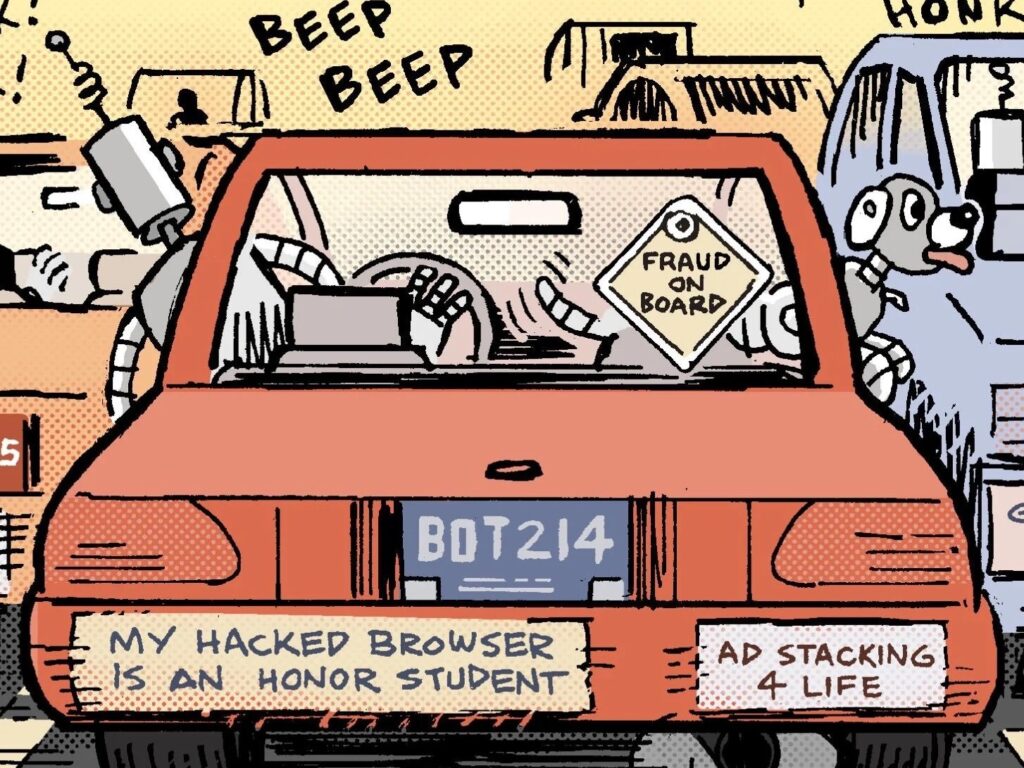With the advent of ad networks and the availability of ad exchanges, why is it such a challenge to get banner inventory to convert? There is no easy answer as each site and each advertiser have their own unique challenges. We all measure our returns differently. As a DR advertiser I always look for an action such as a lead or a sale. I am 100% performance driven! For another advertiser, they may be looking at solely engagement such as click-through rates or a mouse-over. Many examine impressions and care only about premium inventory for branding purposes.
To understand the title, Banner Advertising, Does It Still Work? we need to go back to the start of the current millennium. I chose the word millennium in this context because it sounds almost historical by now. Online advertising is much different than what it was back in the late nineties or even in 2000-2004 during the last recession. Banner advertising during that time was a superior advertising method compared to all other mediums. Better at the time than search that was essentially at its infancy and email.
So if banner advertising was so good, what happened? The truth is banner inventory has changed and it does not convert as well anymore. Fortunately, there is still a vast amount of inventory for all to be had. The key to success is for advertisers to be pro-active and stay on top of where their ads are being served.
Below are some pointers that advertisers should always keep in mind when buying banner inventory. The suggestions appear in no particular order and some will hold more weight for DR advertisers.
- Users block out banner advertisements. Banner advertising is much more mainstream today than what it was 5-10 years ago. With more and more placements available on major portals and increasingly on social networks, users are being bombarded with offers. Flash today is also much more mainstream. For example, the mortgage banners of a person jumping and dancing around show low teaser rates. Our minds accept these arguably intrusive banners and over time have learned to block them out.
- Advertise above the fold. Be weary of networks that will not guarantee impressions above the fold or that state merely that their inventory serves above the fold. Get it on paper. Take a look at the inventory available on TMZ.com and notice how many placements are below the fold and how long the fold extends!
- Cap spending on new buys. Whether you are working with a network or directly with a publisher ensure that you establish daily impression/cost caps. This is the quickest way to get burned, so you always need to protect your organization in this manner.
- Establish an out clause. Never sign an IO with anyone with an out-clause greater than 24-48hrs (business days) unless you truly trust them and the organization they work for. Publishers or networks that want the 30 day out’s are the ones that you want to stay far away from, especially as a DR advertiser. Branded advertisers looking for guaranteed impressions are much better suited for these longer-term outs.
- Some level of transparency is key. For networks or publishers that are transparent, ensure that publisher and placement reporting is sent on a daily basis. For example a given ad network has 10,000 publishers and 100 are promoting an offer with multiple creative and links set-up to track each creative’s individual performance.
Let’s assume “8455” works through this network and promotes an offer (8455 would correspond to the url sending traffic). In this example, publisher 8455 is running two placement sizes, a 250×300 anda 728×90 placement.Let’s say the publisher is running a St. Patrick’s Day creative theme to get a lift during St. Patrick’s Day. The reporting would show as 8455_250×300_StPatsDay_Green or 8455&728×90_StPatsDay_Video_happy.There are multiple ways in which creative can be tracked. In the first example, 8455_250×300_StPatsDay_Green can be broken down as follows: 8455 is the publisher, 250×300 is the size, StPatsDay is the theme, and Green is the specific creative’s name. The above naming scheme allows advertisers to make informed decisions about the inventory that is or is not converting. Obviously an advertiser’s system must also be set-up to interpret this data so that the ROI (Return On Investment) and LTV (Lifetime Value) of a user can be derived and tracked back not only to the site, but the creative size, theme and name! The key is to get as granular as you possibly can with the data. Data is your best ally! For networks that are not transparent, do not become involved with them.
- Be involved with daily reporting. Transparency is useless without reporting. Ensure that these reports include as much detail as possible. Advertisers need to know they are receiving impression breakdown by creative so that ROI and LTV can be calculated and tracked on a daily level. This data will greatly assist advertisers in making decisions about the value of banner placements.
- Refresh rates. Ensure that you are NOT working with networks or sites that work with publishers who have refresh rates on their pages. For the readers that are not aware of what refresh rates are, it means a page that refreshes without the user refreshing it. This is a performance killer and a complete waste of money! Typical refresh rates are every 30 seconds.
- Frequency Capping. Although many networks will provide you with a discount if you run uncapped, be very weary of running without frequency caps. Often times the inventory is cheaper without capping, but it does not convert as well had it been capped. For DR advertisers, frequency caps can literally make or break a campaign.
- Geographically target inventory. If your business is tailored to traffic within the United States, ensure that this is where the inventory is served. Often times inventory can be found at a huge discount in some foreign emerging markets, especially in Asia. When working with networks and publishers ensure this is clearly stated in the IO.
- Day-parting. Find out what time of day your site converts best. If you find that your traffic has a higher value around lunchtime or for example between the hours of 6:00pm and 12:00am EST, day-part your campaigns. Why pay for traffic to your site for a full 24hrs if it really only converts in the evenings? Perhaps there is a specific value for paying for some traffic during the first half of the day versus the second half of the day? Regardless, know your traffic and day-part when you can. Many publishers and networks will push back on this or will only day-part during six or twelve hour increments.
- Target by demo and sex. You should always break down banner advertising into demographics and sex. For example 18-24, 25-34, 35-44, etc. Each demo will have its own value. Likewise, each sex will have its own value. Publishers and networks will charge a premium to target this inventory. As a work-a-round run a run RON (run of network) campaign for a week or two. Then take the data from the time period and break it down. What percentage where male and female, what where the demo’s? Find out what the value was of each demo and sex. Each demographic and sex will have a unique value. This unique value will tell you the value of a site’s particular traffic.After you get this information use it to your advantage when negotiating rates. Why pay a premium for targeted inventory when you don’t know the value? Not all sites can target by demographic or sex, but many larger sites can. Again, be weary of the sites that do not use free tools such as Quantcast.com to target site demographics and sex percentages.
- Push back! If you don’t get the rates, reporting, frequency capping, day parting and demographic targeting then you need push back. You pay the bills, not the publishers. Ensure that you get the targeting that you need.
Successful banner advertisers test, test and test again. Emerging advertising methods such as video banners and IP targeted banners should also receive a portion of testing budgets and they both hold strong potential.
I hope that I have answered the question about banner advertising and whether it holds value. Banner advertising can work, but advertisers really need to do their due diligence, check those web-logs and get IT to run those reports. Like everything that an online marketer does, it can take time and must be calculated. Understand your data and the rest will fall into place. The upside of doing the little things right in banner advertising can be a huge competitive differentiator and exceptionally profitable.
 Network
Network

